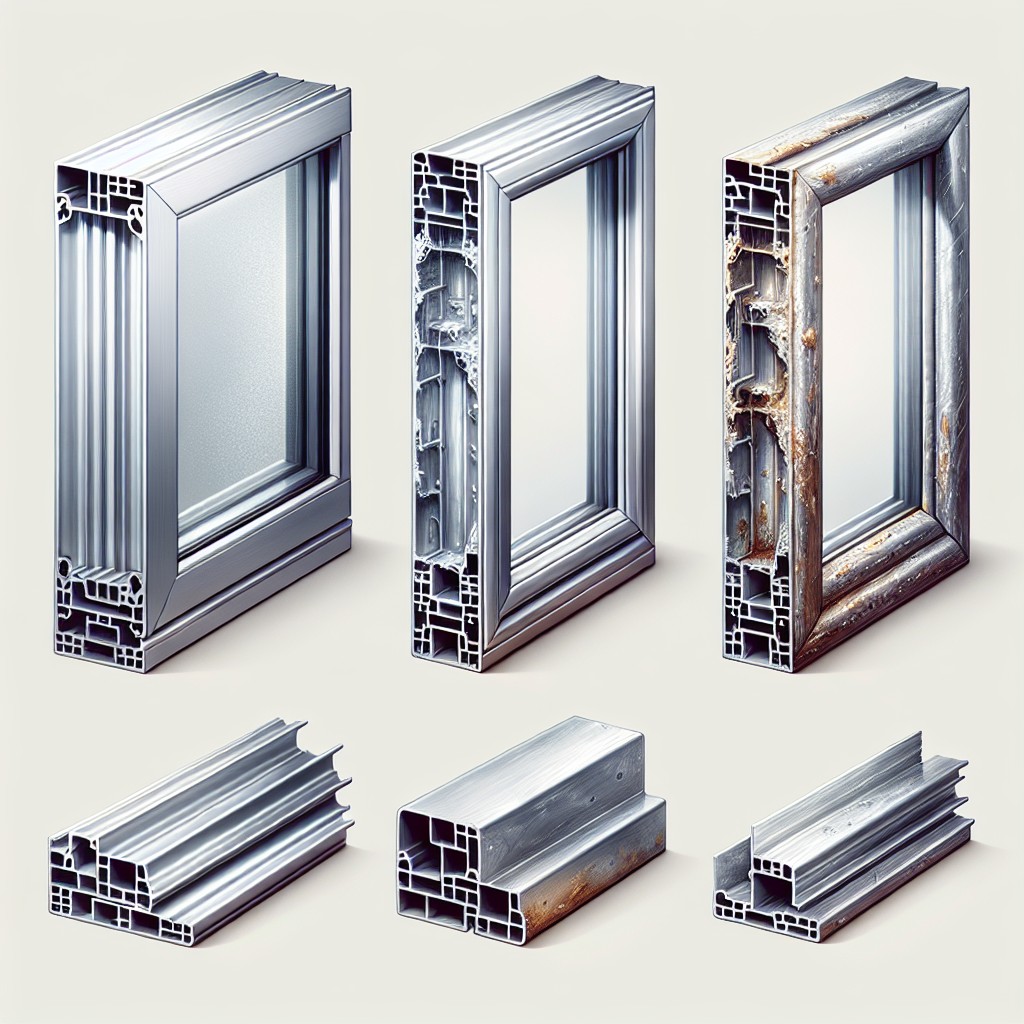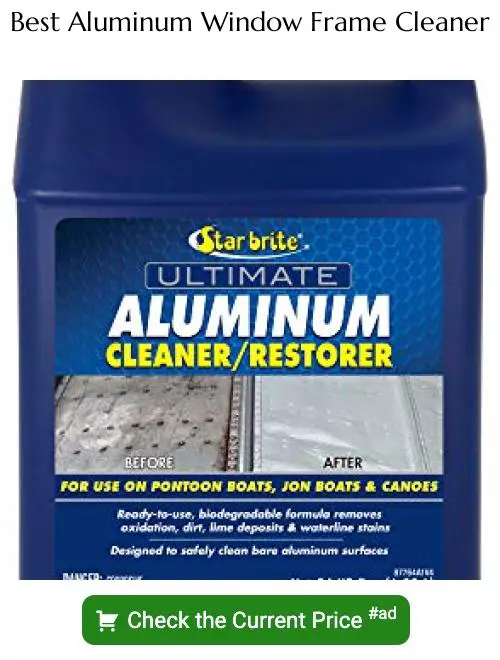This blog post will instruct you on several effective methods to refresh and improve the appearance of your aluminum window frames.
Key takeaways:
- Assess the condition of aluminum window frames before starting
- Deep clean and repair frames to remove dirt, grime, and damage
- Paint frames with acrylic or latex-based paints for a fresh look
- Apply a clear protective coating to prevent oxidation and chipping
- Maintain frames regularly with cleaning, touch-ups, and lubrication
Assessing the Condition of Aluminum Window Frames

Begin by closely inspecting the frames for signs of corrosion, pitting, or oxidation, which may manifest as chalky or white residue. Check the corners and joints where moisture tends to accumulate, causing potential damage. Identify areas with superficial scratches or dents as these may affect the final aesthetic after refinishing. Evaluate the integrity of the existing finish; blistering or peeling indicates the need for a more intensive restoration. Lastly, ensure that the window frame is not compromised structurally. If any part of the frame wiggles or feels weak, professional assessment might be necessary before proceeding with cosmetic improvements.
Deep Cleaning and Repairing Aluminum Window Frames
Begin with removing any loose dirt or debris using a soft-bristle brush, taking care not to scratch the surface of the frames. Next, create a mixture of mild dish soap and warm water, and with a soft cloth, wash the frames gently. Avoid harsh chemicals, which can damage the finish.
For stubborn grime, a mixture of white vinegar and water applied with a non-abrasive pad can be effective. Rinse the frames thoroughly with clean water to remove any soap residue, which, if left, can cause pitting or corrosion over time.
Inspect the frames for any signs of damage such as scratches or dents. Minor scratches can be buffed out with fine steel wool then wiped clean. For deeper damage, consider using a metal filler, following the manufacturer’s instructions, and sand smoothly once cured.
Ensure weather stripping and seals are intact to prevent water ingress, which can lead to frame deterioration. Replace any worn-out weather stripping to maintain insulation and protection against the elements.
Dry the frames completely with a clean, dry cloth to prevent water spots. This simple yet effective deep clean will prepare the frames for further restoration steps, such as painting or applying a protective coating.
Painting Aluminum Window Frames: Selection and Step-by-Step Guide
Choose a paint formulated for metal surfaces, ensuring it’s compatible with aluminum. Opt for acrylic or latex-based paints over oil-based varieties for better adherence and a durable finish. Select a primer that prevents corrosion; this is particularly vital for aluminum frames exposed to the elements.
Begin by taping off the glass panes with painter’s tape to protect them from stray brush strokes. Apply the primer evenly, covering all nooks and crannies, to ensure a smooth, consistent foundation for the topcoat. After the primer has dried completely, proceed with applying the paint. Employ a spray gun or a brush with synthetic bristles designed for a smooth finish. Multiple thin coats are preferable to one thick coat. This approach reduces drips and provides a more even coverage.
Allow sufficient drying time between coats, adhering to the manufacturer’s recommendations. Once the final coat is thoroughly dry, peel off the painter’s tape. The refreshed frames not only enhance aesthetic appeal but also add a layer of protection against weathering. Regular touch-ups can maintain the frames’ appearance for years.
Protective Coating Application for Longevity
Once your window frames are painted, safeguarding them from the elements is crucial. Applying a clear protective coating serves multiple purposes. It can prevent oxidation, which is commonplace in aluminum when exposed to weather, and it helps the paint last longer, resisting chipping and fading.
Consider these key points when selecting and applying a protective coating:
- Choose the Right Type: Opt for a clear urethane or lacquer specifically designed for outdoor metal surfaces. Check the label to ensure it’s compatible with metal and the type of paint you’ve used.
- Preparation is Key: Ensure the painted surface is completely dry and free of any dust or debris. Any contaminants trapped beneath the coating can undermine its effectiveness.
- Applying the Coating: Use smooth, even strokes with a high-quality brush or a sprayer for an even application. Overlap your strokes to avoid gaps that can allow moisture to penetrate.
- Follow Cure Times: Adhere strictly to the manufacturer’s recommended cure times before exposing the frames to moisture or touching.
Regular touch-ups of this coating, as recommended by the product manufacturer, will extend the life of your aluminum window frames and maintain their improved appearance.
Maintenance Tips for Restored Window Frames
Regular cleaning plays a pivotal role in maintaining the pristine appearance of aluminum window frames. Use a soft cloth dipped in a mixture of mild detergent and warm water to gently wipe away dirt and grime. Avoid abrasive materials and strong chemicals that could damage the finish.
Inspect your window frames periodically for any signs of wear or damage. Catching and addressing issues early can prevent more serious deterioration and potentially costly repairs.
Lubricate moving parts such as hinges and locks with a silicone-based lubricant to ensure smooth operation. This helps prevent friction and wear, which can lead to further maintenance needs.
Touch up any scratches or chips promptly using a paint that matches the frame’s finish. This not only keeps your windows looking good but also protects the metal from exposure to moisture and corrosion.
Consider adding weather stripping or caulk around the frame to bolster insulation. This step helps reduce energy costs and prevents water from seeping in and affecting the frame’s integrity.
By adhering to these maintenance tips, you’ll extend the life and enhance the appearance of your restored aluminum window frames, ensuring they continue to complement your home’s aesthetic and perform as expected.
FAQ
How can I improve my aluminum windows?
To enhance the performance of your aluminum windows, fill any located gaps with caulking and weather stripping, and routinely clean the aluminum using a concoction of equal parts white vinegar and water.
How do you restore faded aluminium window frames?
To restore faded aluminium window frames, cleanse them using a small amount of cream cleaner applied to a soft, non-abrasive cloth, which will effectively remove deposits and return them to their original colour.
How do you freshen aluminium window frames?
To freshen aluminium window frames, use a Scotch-Brite Heavy Duty Scourer Pad with dishwashing soap and water, and if stubborn blemishes remain, apply a Gumption Multipurpose Cleaner and a Coarse Steel Wool.
What are the best practices for cleaning exterior aluminum window frames?
The best practices for cleaning exterior aluminum window frames involve using a mixture of warm water and mild dish soap, gently scrubbing with a soft-bristle brush, rinsing thoroughly, and drying with a soft cloth to prevent water spots.
Which paints can successfully be used to rejuvenate old aluminum windows?
Acrylic latex paint is excellent for rejuvenating old aluminum windows due to its durability, longevity, and ability to adhere well to aluminum surfaces.
How can one effectively seal aluminum window frames to enhance longevity and aesthetics?
One can effectively seal aluminum window frames by using silicone-based caulking, applying it evenly along the frame joints, and ensuring a gap-free seal, which both preserves longevity and enhances aesthetics.
Related Stories
- Aluminum Window Frame Cleaner: Simple Guide to Achieve Spotless Windows
- Painting Anodized Aluminum Window Frames: Step by Step How-To Guide
- How to Remove Paint from Aluminum Window Frame: Easy Steps for a Clean Look
- Aluminum Window Restoration: Step-by-Step Guide for Easy Repair
- 15 Ideas for Sliding Aluminum Window Repair
Recap

